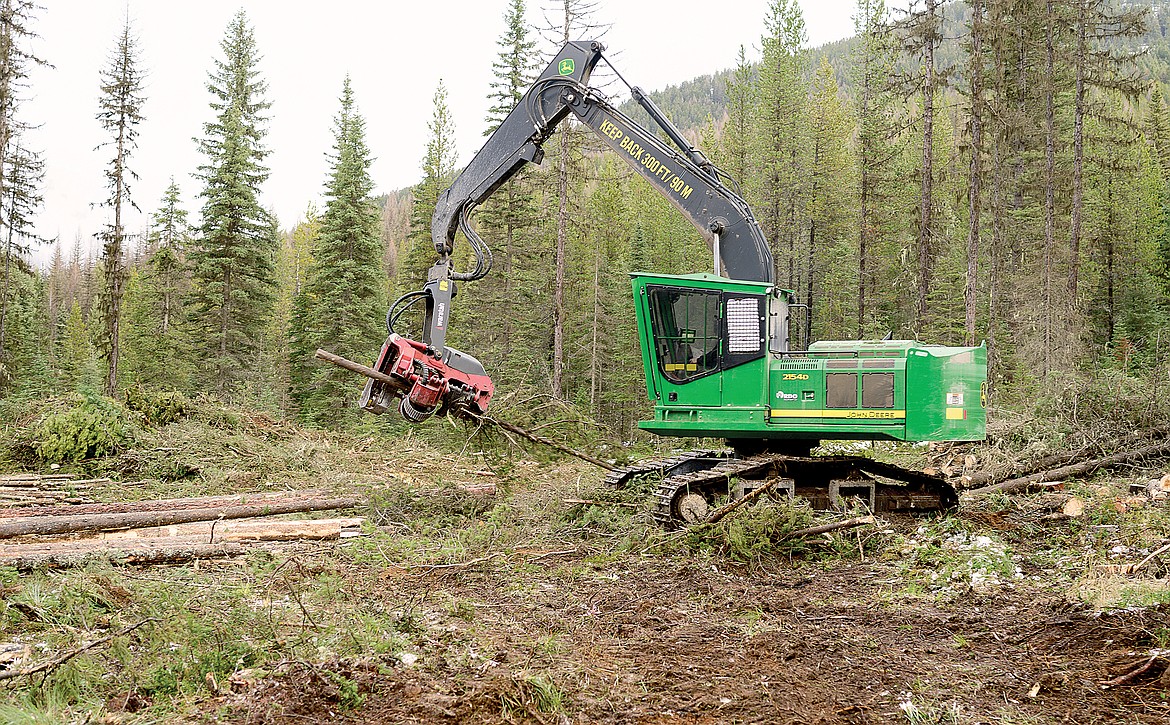Report: Timber harvest up
Timber sales on the Flathead National Forest were higher than usual in the past couple of years according to a recently released 2021 biennial monitoring report for the Forest.
In 2019, the Forest sold about 50.6 million board feet of timber and in 2020 it sold 48.5 million board feet of timber.
In 2019, 24.9 million came from salvage sales and in 2020, 28.5 million was from salvage sales. Salvage sales typically come after wildfire or big wind events that blow down a lot of timber.
“Salvage of dead and dying timber accounted for approximately 49 percent of the volume sold in 2019 and approximately 59 percent of the volume sold in 2020. Salvage volume increased in 2020 through the offing of sales with heavy component of over-mature lodgepole pine. Also, a wind event in March of 2020 created blowdown captured as additional volume in active timber sales,” the report noted.
All told, about 14,241 acres were treated in some form over the two years in the wildland urban interface, a zone of forest that’s near human homes. The treatments ranged from logging and thinning to prescribed burns. Outside of the WUI, about 7,600 acres were treated.
The problem as of late has been starting prescribed burns in the fall, as the windows haven’t been favorable — either too dry or too wet.
“We have missed three consecutive years of unfavorable fall weather conditions resulting in the relatively low number of acres burned by broadcast. This has left a large number of units uncompleted,” the report noted.
The report also looks at a myriad of conditions on the 2.3 million acre forest. Here’s some interesting facets of the report:
• The total number of acres burned in wildfires from 2015 to 2018 was 185,087 acres, or about 8% of the Forest. They burned at a relatively even mix of low, moderate and severe levels.
“One of the more notable desired changes is the increase in western larch in the warm-dry potential vegetation type. Ponderosa pine is also showing a desirable upward trend in the warm-dry vegetation type, though much smaller amount of increase compared to western larch,” the report noted.
Larch are coveted trees for their timber and their wildfire fire resistance. Conversely, they’re also an excellent firewood.
Species like whitebark pine and white pine, however, are not faring as well.
“Desired upward trends in presence/dominance type for western white pine and whitebark pine are not occurring,” it said.
The five-needle species as susceptible to blister rust, a fungal infection that eventually kills the trees.
Weeds are also a problem. It’s estimated the Flathead has about 33,724 acres of land that are infested with weeds, though only about 736 acres were actually treated and further inventory of weeds wasn’t done in 2019 and 2020 due to lack of funding and/or personnel.
The full report is available online at https://www.fs.usda.gov/detail/flathead/landmanagement/planning/?cid=fseprd998005.
People and stakeholders can comment on the report, which includes possible changes to language and monitoring methods, at comments_northern_flathead@usda.gov. Comments will be accepted until March 28. Upon considerations of comments, the proposed changes to the LRMP Monitoring Plan will be finalized and effective upon signature of the responsible official (Flathead National Forest Supervisor, Kurt Steele) and published on the Flathead National Forest website.
The report is required under the 2012 Forest Planning rule.


